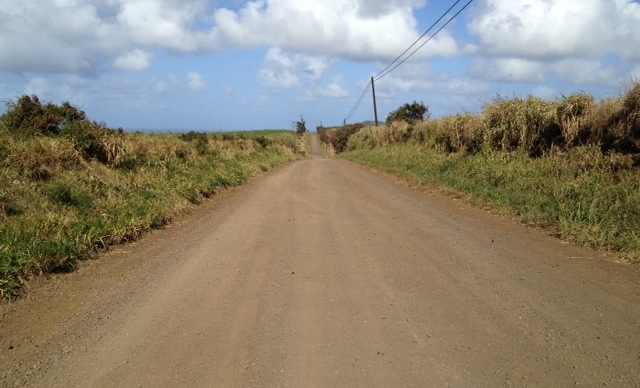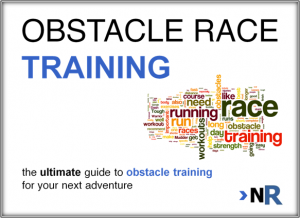When I look at some runners’ training, I want to claw my eyes out: it’s so boring.

I’ve been working on Strength Running for almost three years. I’ve helped thousands of runners design better training.
And it’s funny – I’ve noticed a pattern similar to nearly every runner. Whether you’re training for a 5k or a marathon or running 10 miles a week or 60, it’s always the same.
Most people’s running is boring as hell! It’s the same distance runs… in the same shoes… in the same neighborhood… with the same stretches…and the same race goals.
Yawn.
The Concept of “Rigid Variation”
You can usually get out of your rut by making a few small changes: different workouts, a new race to train for, or even running more trails.
In his book Run Faster (my favorite book on training), Brad Hudson talks about the importance of variety. He says:
“I also like to include little wrinkles in workouts that…force the runner’s body and mind to experience the unfamiliar. Pace, surfaces, gradients, duration, fatigue states, and even shoes are among the variables you can manipulate to stimulate stride refinements.”
Variation is crucial in how I create training plans. Each week typically has at least four paces and over 50 different exercises to help prevent injuries and help runners get faster.
More importantly, when I plan long-term I suggest runners focus on different types of races. Have you ever met the “two marathons a year” person who only runs marathons and seems to have one speed (slow)?
They rarely see improvement and always seem to be in a rut with consistent overuse injuries. When I got my USA Track & Field coaching certification, training variety was discussed in the course as a way to actually reduce repetitive stress injuries!
But having a lot of variety in your training doesn’t mean that you get to run random distances and workouts. Every schedule should follow a logical progression and the weekly workouts should be similar from week to week. The overall structure should be fairly rigid.
The real variety comes in the details:
- Rotating 2-3 (or more!) running shoes
- Subtly altering your pace in workouts (even splits last week? Try a slight negative split this week)
- Following new – but still effective – strength exercises
- Running trails, avoiding the monotony of the track, and using hills
Vary This: Your Next Race
It might seem that you can only vary a few things with running. It’s a seemingly simple sport, right? Not really. Like Hudson mentions, you can change a lot of variables.
But today, I want to talk about one of the most fun variations that impacts your entire running schedule: the race that you’re actually training for.
The common distances of 5k, 10k, half marathon, and the marathon are common for a reason: people love them and they’re competed in at the highest levels of the sport. But even those get boring sometimes – how do you really spice things up?
Earlier this year I asked myself that same question. So I decided to run something 100% new to me: a Warrior Dash (3 miles with obstacles).
And I surprised the hell out of myself by running faster than nearly 17,000 other competitors over two full days of races (a new race starts every half hour and they compile all of the results together). This break from “normal” running was exciting and I loved it.
To run a good obstacle race, there are a few different things you have to do in your training:
1. Run trails. The majority of obstacle races are on trails, grass, or mud courses. If you’re not used to uneven terrain, you risk injuring yourself or getting left in the dust by more nimble runners.
2. Be (relatively) strong. Luckily you don’t need to be able to deadlift 350 pounds to dominate an obstacle race. But you do need to be able to climb up cargo nets and hoist yourself over walls.
(The workouts that helped me get 50% stronger, while losing 3% body weight, were instrumental in my Warrior Dash win. See how I did that here).
3. Get Flexible. I love teasing uncoordinated runners who can’t even stand up straight while putting on their shoes. Dynamic flexibility is not only crucial for injury prevention, but completing all those obstacles too!
I never set out to win a Warrior Dash, but the natural training variations and my openness to trying new things helped make it possible.
Introducing: the Obstacle Race Training Guide
As I look back, there are a lot of things I could have done differently to better prepare. My workouts weren’t specifically geared toward obstacle races and I should have spent more time on strength work.
Hindsight is 50/50, but I had the chance to redeem myself recently when the team at Nerve Rush (a website for adrenaline junkies!) asked me to write a definitive guide to obstacle race training.
If I can beat almost 17,000 other runners, I thought it would be helpful to share some great ideas on how to help you do the same!
To see all the info, check out the guide here.
Here’s a few things you can expect:
- Specific video demonstrations of exercises you need to stay healthy and compete on obstacles
- Optimal gear for obstacles, plus detailed fueling strategies for various race distances
- How to prepare and stay confident on the race course
Whether or not you run an obstacle race (they attract a certain weirdo, but you get beer afterward!) is almost beside the point. My goal here is to encourage you to add more variety into your running.
You’ll get in better shape, prevent injuries, and just have more fun!
By the way – this guide is free. You can download it here.